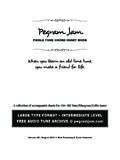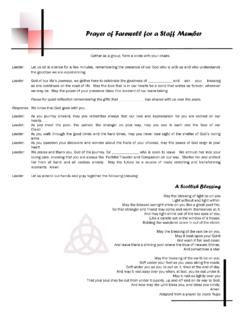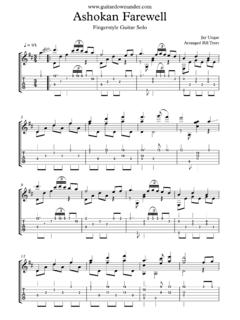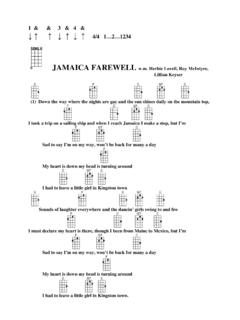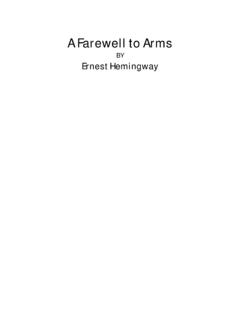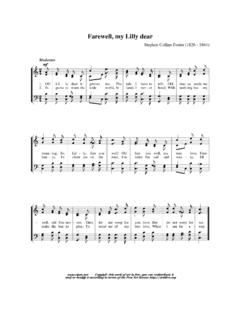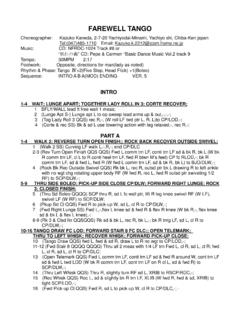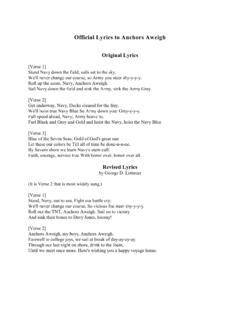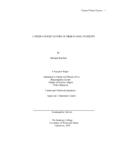Transcription of Pegram Jam Chord Chart Book
1 Version 46 January 2009 Kirk PickeringPegramJamFIDDLE TUNE Chord Chart BOOKWhen you learn an old time tuneYou make a friend for 2 Pegram Jam Chord Chart book Kirk Pickering Version 46 January 2009 Copyright Kirk Pickering 2001 Pegram , TennesseeEdited by Susie ColemanPublished by rights personally ask you to respect our wishes that the information contained herein is presented foreducational use only. While most of the songs on our list are Public Domain tunes, not every one isan old composition. A small percentage were written by contemporary composers but identify with thetraditional music style.
2 Another small percentage of tunes are untraceable by name, given thelimitations of the Copyright office and other research resources available online. The inclusion ofthese tunes here are not meant to violate or misuse the copyright protection rightfully due a copyrightholder, but appear here for the purpose of music education only. While we hope that any author wouldbe pleased to find that other fiddlers are interested in learning his music, we will be happy to removeany song from the PegramJam collection on request of copyright ALL OLD TIME TUNES ARE OLD. Please be responsible for thoroughly researching any tuneyou might wish to perform or record for copyright fees that might apply.
3 3 Pegram Jam Chord Chart book Kirk Pickering Version 46 January 2009 The Pegram Jam is just a jam. It s a casual, loosely organized practicesession, open to Old Time musicians from the greater Nashville area with acollective goal: to teach, learn and practice Old Time fiddle tunes. It s a prettypopular place for tune that end, we created thePegram Jam Chord Chart book to help rhythmand bass accompanists remember the appropriate Chord changes to the tuneswe play in our jam. A tune can be presented at the jam by any musician whoattends; our charted arrangement is generally based on that version.
4 We chartout almost every tune brought to the jam and add the tune to our we strive to be correct, you will find errors and discrepancies; however,we continually work on the list. Check our website for periodic 1 How to read the Pegram Jam Charts .. 4 SECTION 2 Tune Q&A .. 5 SECTION 3 Alphabetical List of Tunes .. 6 SECTION 4 Tunes List by Key .. 9 SECTION 5 Tune Charts .. 12 SECTION 6 Medleys .. 58 PegramJamFIDDLE TUNE Chord Chart BOOKPage 4 Pegram Jam Chord Chart book Kirk Pickering Version 46 January 2009 Some tips on how to use the Pegram Jam Chord Charts Each letter in a Chart represents a Chord .
5 Our charts are mostly written in 2/4 time. That means you will play each Chord position for two counts. Italso helps to add an and between each count ( one-and-two-and ). Asplit bar (written as G|D or A|G)would mean that you would play the first Chord for one count ( one-and) and then the second Chord for onecount ( two-and ). Tunes are made up of parts ; some have a single part repeated over and over, but the majority of songshave an A part and B part that are repeated. There are tunes with as many as five parts. Waltzes oftenuse two A parts followed by one B part and another single A part to resolve the round.
6 Repeat the Part once when you come to :|| . To repeat the A part, return to the start of the song. To repeatthe B part, return start of the B part, usually marked with ||: . Some parts do not repeat. A dash or minus sign after a letter indicates a minor Chord (A-, E-, etc). The number 7 after a Chord indicates a dominate seventh Chord (A7, E7, etc.) Most charts do not include sevenths, augmenteds, etc. More advanced players may be able to add thosevariations when they logically would occur. However, rhythm players can stick to simple major chordformations and the music will generally sound SignaturesYou can put different meters into your head by counting them out in the manner below.
7 Putting the and between the counts keeps us from rushing the tempo. Note that there are three optional ways to count both2/4 and 4/4 time. You should use the count that works best with the melody at IN AMEASURECOUNT OUT LOUD OR IN YOUR HEAD2/4 Timetwo quarter notes1- 2four eighth notes1-and-2-andeight sixteenth notes1-eh-and-ah-2-eh-and-ah4/4 Timefour quarter notes1 - 2 - 3 - 4eight eighth notes1-and 2-and 3-and 4-andsixteen sixteen notes1-eh-and-ah 2-eh-and-ah 3-eh-and-ah 4-eh-and-ah3/4 TimeWaltz time / three quarter notes12 3 - 12 36/8 TimeJig or double jig / six eighth notes1-and-ah 2-and-ah or1-2 -3 4-5 -69/8 TimeSlip jig / nine eighth notes1-and-ah 2-and-ah 3-and-ah Page 5 Pegram Jam Chord Chart book Kirk
8 Pickering Version 46 January 2009Q& : Why are you doing this?A: This project began when a group of folks(mostly fiddle students) started playing OldTime fiddle tunes together at our home inPegram, TN, back in December 2001. At thattime, many of our rhythm players were new tostring band music. We knew how to playchords, but we didn t know the progressionsfor fiddle tunes. We couldn t find Chord chartsfor many of the tunes we were playing;sometimes when we could find publishedchord charts, those we found did not matchour melody arrangements. We began creatingand collecting these charts in early 2002 sothat we could play more tunes as an ensemblein a shorter period of time.
9 We are notadvocating that this is the proper way to learnchords; we are merely providing them becauseit has worked for our group. You are welcometo use them or : Where do these chords come from?A: The majority of these Chord charts are made by ear . Contributions come from a number ofresources, including our jam members, theirteachers, the Internet, and various printed andrecorded material. The group makes the finaldecision as to what arrangement sounds rightand we make amendments to arrangements ifit seems appropriate. Q: Doesn t this take a lot of time? Whybother?A: We have personally invested hundreds ofhours in this project.
10 However, creating thesecharts has taught us how tune progressionsare put together. We have, over time,developed the ability to hear chordprogressions quickly, and to communicate thechanges to other players. Writing these chartshas made us better musicians. And it s a lotmore fun to play with folks who all use thesame : Are these charts the official version ofthe songs?A: No way. These are the chords that seem towork best for our jam. There are surely otherways to Chord these songs; however, we haveattempted to create charts which show thebasic Chord structure as we play them in : Can I listen to your jam s arrangements?
